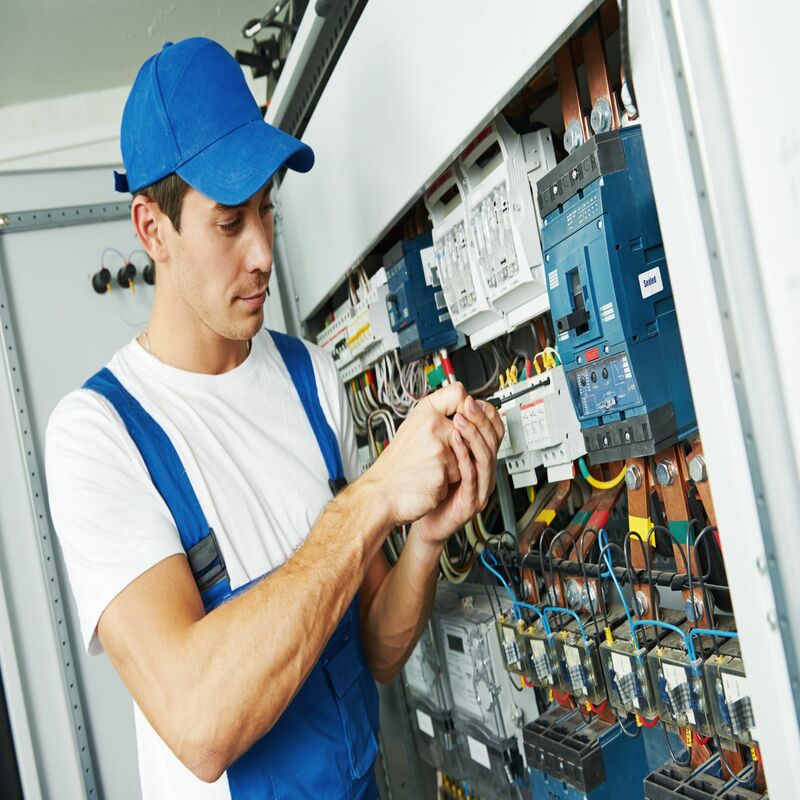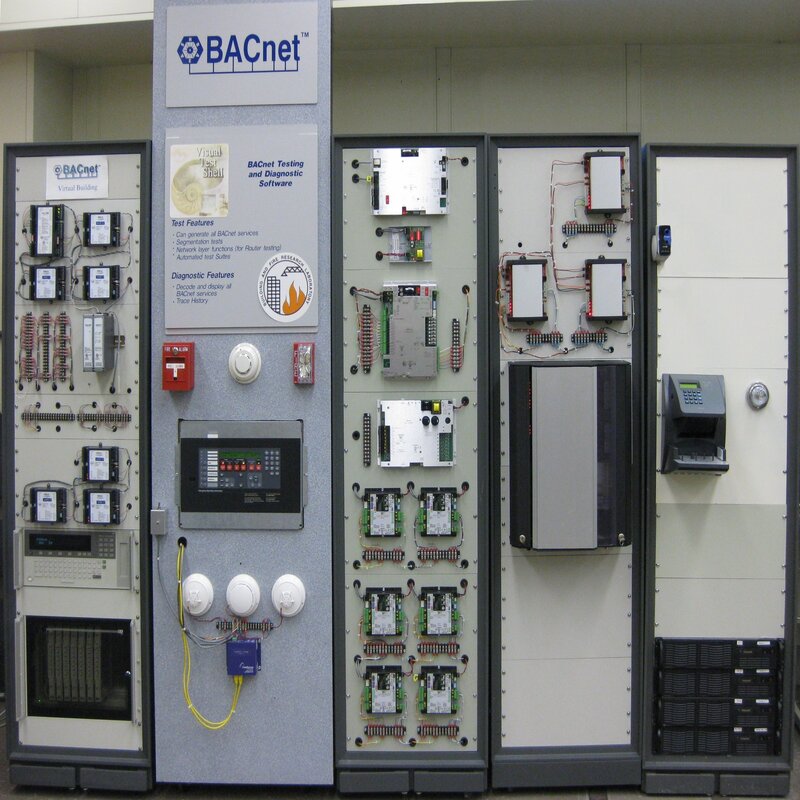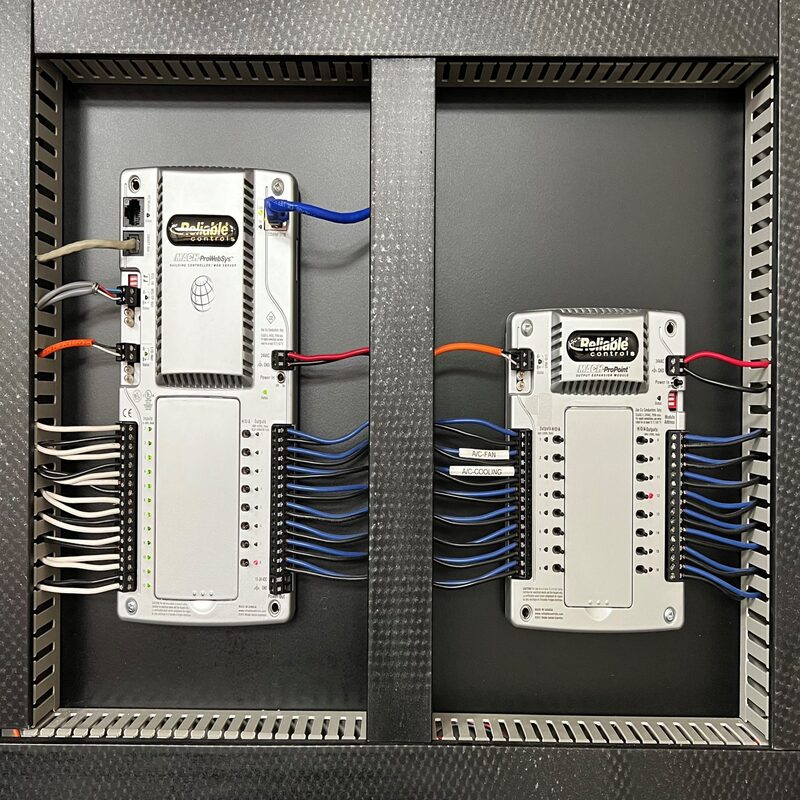Building automation products have revolutionized how we interact with our environments. As technology advances quickly, these products have become essential. They enhance energy efficiency and overall human comfort, making buildings smarter and more responsive. With a suite of sensors, controllers, and integrated software, building automation systems (BAS) can adapt to various conditions. These innovations provide optimized performance and user satisfaction.
Powering Energy Efficiency
Reducing Energy Consumption
Building automation products drastically reduce energy consumption. Smart thermostats, for instance, adjust temperatures based on occupancy and time. Motion sensors can switch off lights in unoccupied spaces, saving significant amounts of energy. Advanced control systems can manage HVAC systems far more efficiently than manual interventions. They do all this in real-time, ensuring energy is used only when necessary. This results in not only cost savings but also a reduced carbon footprint.
Monitoring and Analytics
Another critical aspect is monitoring and analytics. Modern BAS come with integrated software that monitors real-time data. Energy consumption, temperature variations, and even occupancy levels are tracked. These data points are invaluable for making operational improvements. By analyzing these, facilities managers can identify inefficiencies. They can then implement corrective actions swiftly. This ensures that the building continues to perform optimally. Moreover, predictive analytics can foresee potential issues before they escalate, ensuring smooth operations.

Enhancing Comfort and Productivity
Intelligent Climate Control
Intelligent climate control is one of the most lauded features. Smart HVAC systems can adjust temperatures in different zones of a building. These systems consider external weather conditions, occupancy, and specific preferences. As a result, the indoor environment remains consistently comfortable. This is particularly beneficial in large office spaces. Employees can work in ideal conditions, boosting productivity. Moreover, this targeted approach reduces energy wastage.
Advanced Lighting Solutions
Lighting plays a crucial role in occupant comfort and productivity. Automated lighting systems can adjust based on natural light availability, time of day, and occupancy. For example, they can dim lights when natural light is abundant. This minimizes energy usage while maintaining appropriate illumination levels. Customized lighting scenes can also be programmed for different activities. From meeting rooms to open-plan areas, each space can have optimal lighting conditions. This adaptability not only enhances comfort but also influences mood and efficiency.
Boosting Security and Safety
Integrated Security Systems
Building automation products also enhance security measures. An integrated security system includes surveillance cameras, motion detectors, and access controls, all centrally managed. For instance, cameras can provide real-time video feeds monitored from a single interface. Motion detectors can alert security personnel to unauthorized movements. Access control systems ensure only authorized personnel can enter restricted areas. These technologies work together to create a secure environment, providing peace of mind.
Fire and Emergency Systems
In terms of safety, automated fire and emergency systems are indispensable. These systems detect smoke, fire, and other hazardous conditions instantly. They trigger alarms and automated responses such as activating sprinklers. Emergency lighting systems can also guide occupants to the nearest safe exits. Integration with other building systems allows for rapid, coordinated responses. This can drastically reduce the impact of emergency situations, ensuring occupant safety.

Innovations in Building Automation
IoT Integration
The Internet of Things (IoT) has significantly influenced building automation. IoT devices, such as smart sensors, communicate and share data seamlessly. This level of connectivity enables buildings to react intelligently to various conditions. For instance, IoT-enabled sensors can monitor air quality and activate ventilation systems when necessary. This interconnected ecosystem ensures a highly adaptive environment. Moreover, data gathered from IoT devices offer deeper insights into operations, facilitating continuous improvements.
Machine Learning and AI
Machine learning and AI are pushing the boundaries of building automation. These technologies enable systems to learn from past data and make informed decisions. For example, an AI-driven HVAC system can predict optimal settings based on occupancy patterns. Machine learning algorithms can identify energy-saving opportunities with impressive accuracy. This proactive approach ensures systems operate at peak efficiency consistently. The potential for machine learning and AI in building automation is boundless, promising ever smarter environments.
The Future of Smart Buildings
Integration and Interoperability
As technological advancements continue, integration and interoperability are key trends. Future building automation products will focus on seamless integration of various systems. HVAC, lighting, security, and other systems will work together more cohesively. This will lead to a more unified and efficient building management experience. Standards and protocols are evolving to support these integration efforts. This ensures that products from different manufacturers can work together, benefiting the end-user.
Sustainability and Smart Cities
Sustainability is another critical focus for future building automation. As urbanization continues, smart buildings will play a crucial role in sustainable development. These buildings are designed to be energy-efficient, reducing the urban carbon footprint. Building automation products will be crucial in achieving these sustainability goals. Enhanced energy management, waste reduction, and resource optimization will be key features. Moreover, smart buildings will contribute to the broader vision of smart cities. They will integrate with city-wide systems, enhancing overall urban living standards.
BACS are set to play a crucial role in the development of smart cities, where interconnected infrastructures enhance urban living. By optimizing energy use, reducing waste, and ensuring efficient resource management, BACS contribute to the broader goals of sustainable development. For instance, smart grid integration allows for better management of electricity distribution, catering to fluctuating demands. In residential settings, BACS can coordinate with home energy management systems, balancing energy consumption and production, particularly in homes equipped with renewable energy sources like solar panels.
Advancements in Data Analytics
The role of data analytics in BACS is expected to grow, offering deeper insights into building operations. Advanced data analytics can identify inefficiencies, recommend improvements, and provide predictive maintenance alerts. For example, analyzing HVAC performance data can reveal patterns that indicate the need for maintenance, reducing downtime and extending equipment life. Enhanced data visualization tools will also make it easier for building managers to understand complex data, facilitating better decision-making. With the advent of real-time analytics, BACS can respond more dynamically to changing conditions, further optimizing performance.

Challenges and Considerations
Cybersecurity Concerns
While the benefits are undeniable, there are challenges in building automation. Cybersecurity is a significant concern. As BAS become more interconnected, they are increasingly susceptible to cyber-attacks. Ensuring robust security measures is crucial. This includes encryption, regular software updates, and stringent access controls. Cybersecurity needs to be a priority in the design and implementation of these systems. Failing to do so could result in severe repercussions.
Initial Investment Costs
Initial investment is another consideration. Building automation products can be costly to implement. This involves the hardware, software, and installation services. However, these costs are often offset by long-term savings in energy and operational efficiencies. Decision-makers need to consider the return on investment (ROI) carefully. While the upfront costs can be daunting, the long-term benefits justify the investment.
Conclusion
The Transformative Power
Building automation products have transformed the way we manage and interact with built environments. They enhance energy efficiency, comfort, security, and operational efficiency. Technologies like IoT, machine learning, and AI further amplify these benefits. As we move towards more integrated and sustainable solutions, the potential for smart buildings is enormous. However, challenges such as cybersecurity and high initial investments must be addressed. This ensures that these transformative technologies deliver on their promises effectively.
A Smarter Future
In conclusion, building automation products are no longer a luxury but a necessity. They offer a vision of a smarter, more efficient, and sustainable future. As technology continues to evolve, so will the possibilities for building automation. The journey towards smarter, safer, and more sustainable buildings is well underway. Those who embrace these technologies today will lead the way in shaping a better tomorrow. The future indeed looks bright, and it is undoubtedly smart.


